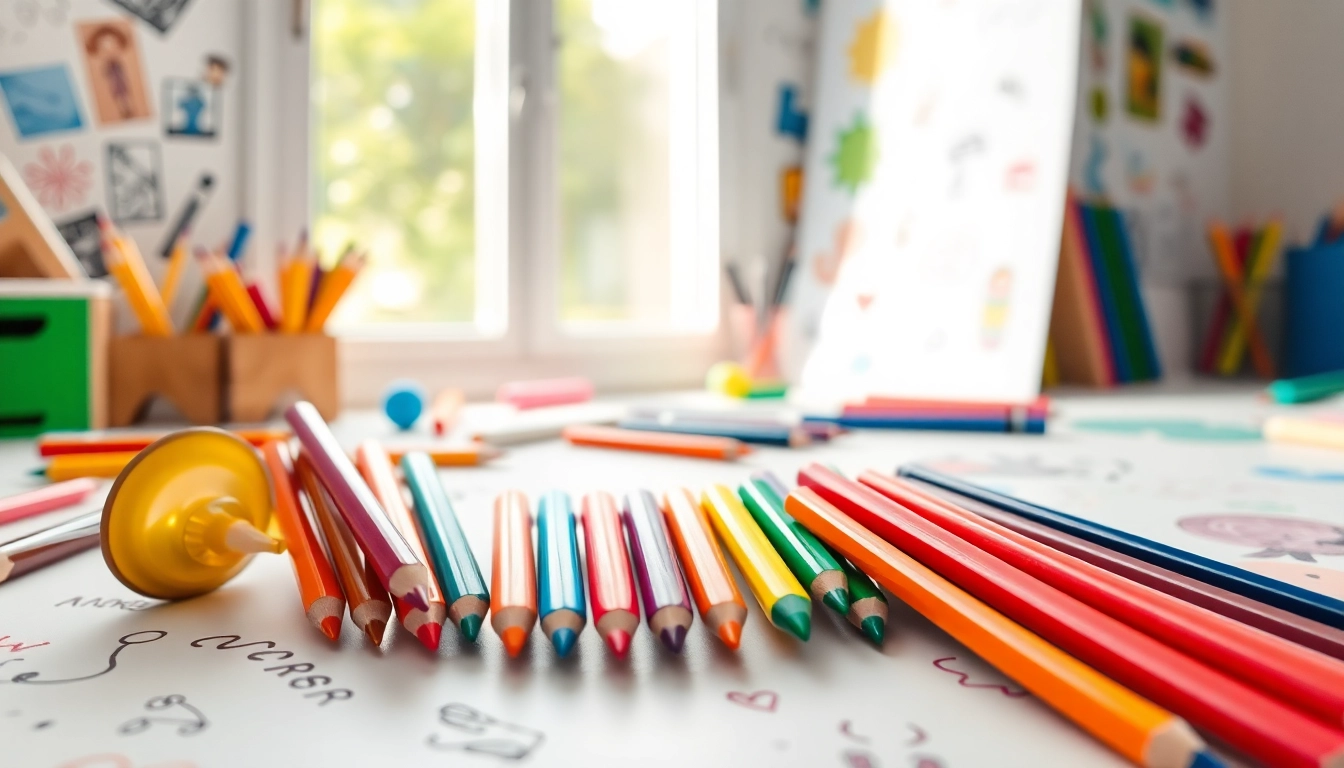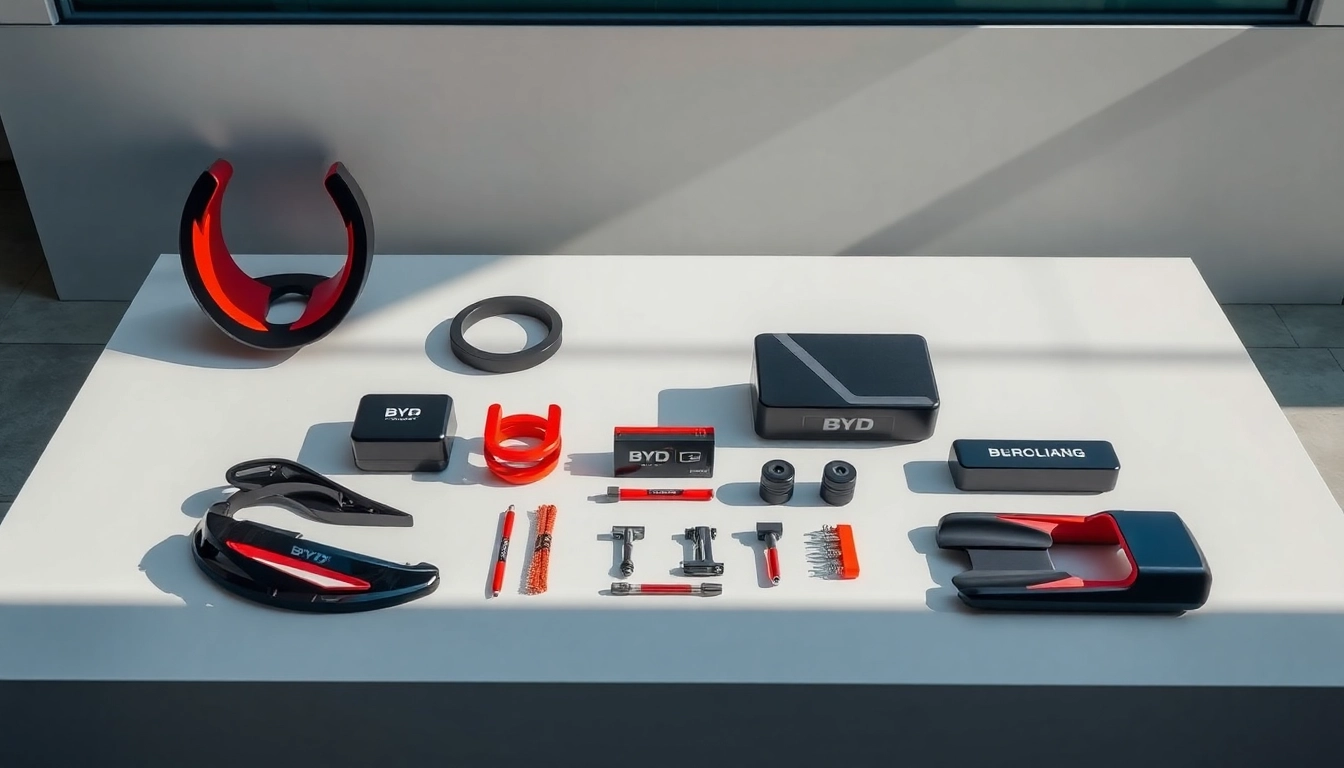Understanding Kids Colouring Pencils
Colouring is not just an entertaining activity for children; it plays a pivotal role in their development. When it comes to enhancing creative expression, kids colouring pencils are essential tools. This article dives deep into the different kinds of colouring pencils available, their benefits, and what to consider when purchasing them for your little ones.
1. Types of Kids Colouring Pencils
Understanding the various types of kids colouring pencils available is crucial for making an informed decision. Each type has its distinct characteristics, catering to different age groups and artistic preferences.
- Wax Crayons: These are the classic choice for young children due to their smooth application and vibrant colours. They are non-toxic and durable, making them ideal for toddlers who may not have fine motor skills yet.
- Colored Pencils: Available in a range of qualities from student-grade to professional, coloured pencils allow for more precision in colouring. Their versatility makes them suitable for older children who might be ready for more detailed artistic work.
- Watercolor Pencils: These pencils can be used two ways—dry or wet. When applied with water, they produce beautiful, fluid blends that can make any artwork come alive, appealing to children keen on experimenting with different techniques.
- Pastel Pencils: Ideal for children who love soft and rich colours, pastel pencils provide a unique texture. They work exceptionally well for creating dreamy landscapes and abstract art.
- Eco-friendly Options: With a growing emphasis on sustainability, many brands are producing colouring pencils made from recycled materials or natural substances, appealing to environmentally conscious parents.
2. Benefits of Using Quality Colouring Pencils
The quality of the colouring pencils you choose can significantly impact your child’s experience. Here are some benefits of opting for high-grade products:
- Enhanced Creativity: Quality pencils produce vibrant colours that can inspire kids to experiment more creatively. When they see more beautiful results, they’re encouraged to explore further.
- Better Pigment: Superior quality pencils often have better pigmentation, which results in more vibrant colours. This aspect can enhance the overall art experience and learning.
- Durability: High-quality pencils are built to last longer, reducing the frustration of breakage and loss of product, making them cost-effective in the long run.
- Safety Standards: Quality manufacturers ensure that their products meet safety regulations, providing peace of mind to parents who are concerned about the materials their kids are using.
3. How to Choose the Right Colouring Pencils
Choosing the right pencils involves considering several factors to ensure the best creative experience for your child:
- Age Appropriateness: Consider the child’s age; toddlers might find chunkier crayons easier to grip than conventional pencils. Similarly, older children or those with more experience might benefit from professional-grade coloured pencils.
- Artistic Interest: Understanding what your child enjoys—be it detailed sketching or broad, expressive strokes—can guide you towards the right type of pencil.
- Budget: While investing in quality is essential, budgeting appropriately will mean you can have the most valuable set without breaking the bank.
- Reviews and Recommendations: Reading reviews and getting recommendations from other parents can provide insights into the best products on the market.
How Kids Colouring Pencils Enhance Creativity
Colouring is not merely a pastime; it’s a vital activity that significantly enhances children’s creativity. Let’s explore how kids’ colouring pencils specifically contribute to fostering artistic expression.
1. Fostering Imagination Through Color
Colouring allows kids to explore and express their imagination unbounded by reality. They can choose their favourite colours to create scenarios that exist only in their minds. This choice promotes decision-making skills and self-expression, helping children convey their thoughts and feelings in ways words cannot.
2. Encouraging Motor Skills Development
The act of colouring is excellent for developing fine motor skills. The precise control required to navigate the pencil and stay within lines strengthens hand-eye coordination. This skill is foundational in many other areas of development, from writing to various forms of manual crafting.
3. Using Colouring Pencils for Educational Activities
Colour as a teaching tool can greatly enhance engagement. Parents and teachers can integrate colouring activities with lessons in various subjects such as mathematics, biology, and language arts. For instance, drawing and colouring maps incorporates geography and art simultaneously, making learning more enjoyable.
Top Brands for Kids Colouring Pencils
A wide array of brands manufacture quality kids colouring pencils. Understanding the landscape can help you choose the best options for your children.
1. Comparing Popular Colouring Pencil Brands
Some brands stand out due to their reliability, quality, and variety:
- Crayola: Perhaps the most recognized name in the industry, Crayola offers a range of products that cater to various age groups and preferences—known for their bright colours and safety standards.
- Faber-Castell: Renowned for their artist-quality pencils, Faber-Castell provides products suitable for children as young as 4. Their pencils feature smooth, intensive colours that professional and amateur artists alike admire.
- Prang: This brand strikes a balance between quality and affordability, making it a good choice for parents not wanting to compromise on quality yet needing a budget-friendly option.
- Sakura: Known for their water-based and pastel options, Sakura is perfect for children who prefer to dabble in various artistic techniques, helping expand their skills.
2. Reviews of Kid-Friendly Colouring Pencil Sets
Understanding the pros and cons of various products can guide your purchase:
- Crayola Colored Pencils: Users praise the vibrancy and smoothness of the application. Reviewers often note that the range available allows for significant creative expression.
- Faber-Castell Graphite Colour Pencils: Customers appreciate their easy blendability and resistance to breaking, making them favorites among parents of budding young artists.
- Prang Drawing Pencils: They’re often highlighted for their affordability while also offering a range of vivid colours convenient for school-related colouring activity.
3. Budget-Friendly Options without Compromising Quality
Not all quality colouring pencils need to come with a hefty price tag. Here are a few budget-friendly options:
- Crayola Twistables: No need to sharpen these unusually practical pencils; just twist for more colour. They are very affordable and encourage children to experiment.
- Prang Colored Pencils: These provide reliability without excessive costs and are often found in sets perfect for classroom use.
- Arteza Colored Pencils: Arteza offers quality products at reasonable prices, making them another great alternative for parents.
Creative Uses for Kids Colouring Pencils
Keen to diversify your kids’ use of colouring pencils beyond traditional colouring books? Here are some innovative ideas!
1. Fun DIY Craft Projects with Colouring Pencils
Using colouring pencils in crafting can open a world of possibilities. Children can create custom cards, decorate assorted items, or even design their own art stationery. Craft projects help foster problem-solving skills and increase artistic awareness.
2. Using Colouring Pencils for Home Decor
Kids can create artwork that enhances family space. Framing their colourful pieces adds a personal touch to your home decor and encourages them to take pride in their creative output. This appreciation for art can augment their sense of accomplishment.
3. Incorporating Colouring in Classroom Activities
Educators can enhance classroom experiences through colouring. Integrating colour with math problems (colouring shapes when calculating) or science (drawing and colouring life cycles) engages children visually and cognitively, making learning more dynamic.
Maintaining and Storing Kids Colouring Pencils
Proper maintenance and storage are key to ensuring that your children’s colouring pencils remain in good condition and ready for use.
1. Tips for Sharpener and Pencil Care
Maintaining colouring pencils starts with having the right sharpener. Choose a quality sharpener that minimizes breakage and produces a fine point. Regular cleaning of sharpeners prevents any wood powder from clogging the blades. Discuss with your child the importance of handling their pencils with care to avoid accidental breakage.
2. Best Storage Solutions for Colouring Supplies
Keeping colouring supplies organized can minimize mess and enhance creativity. Use tiered storage containers or pencil cases. Labeling can help children easily find their preferred colours, fostering independence as they create.
3. Ensuring Longevity of Colouring Pencils
To prolong the life of crayons and pencils, store them in a cool, dry place, avoiding extreme temperatures and sunlight that can lead to colour fading. Proper sharpening techniques also play a role in longevity, ensuring that the tip remains durable for extended use.



